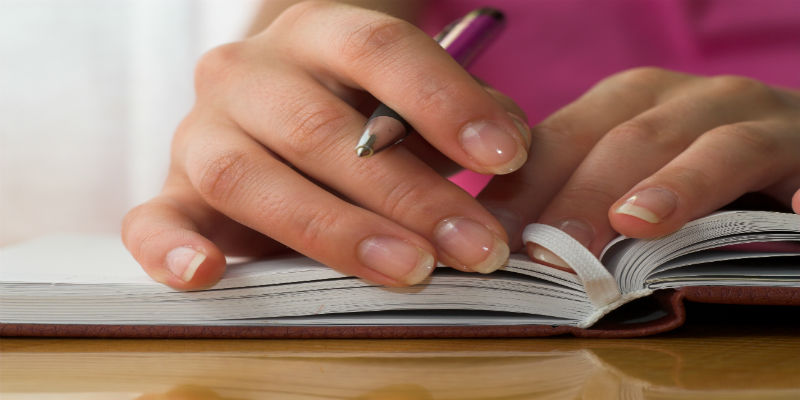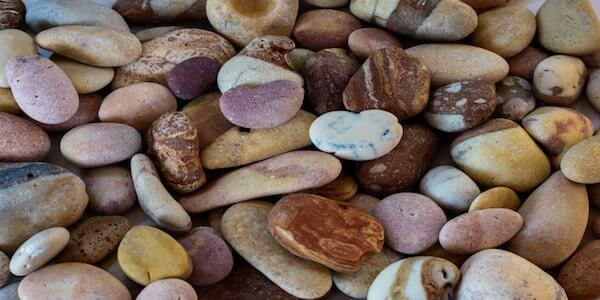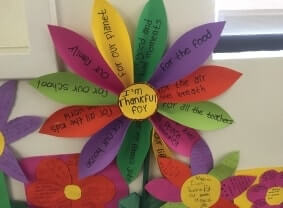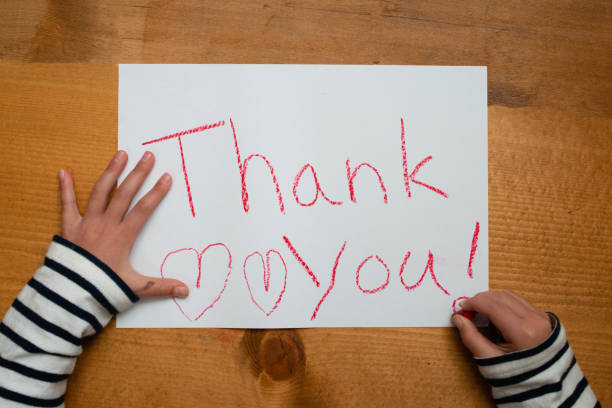
A Life of Gratitude
It’s always a good time to incorporate gratitude practices into your family life, but November may be the best month of all to start getting intentional! We hope you enjoy this list of gratitude exercises from Positive Psychology help you to bring more thankfulness, appreciation, and gratefulness to your life.
1. Journaling
Writing down a few things you are grateful for is one of the easiest and most popular exercises available.
The purpose of the exercise is to reflect on the past day, few days, or week, and remember 3-5 things you are especially grateful for. In this way, you are focusing on all the good things that happened to you in a given set of time.
What is the appropriate amount of journaling one should do per week? Some people propose doing it every day while others suggest once per week. The arguments against doing it every day are that it can be tedious and forced. It becomes a practice you feel you should do or need to do instead of something you want to do. When journaling becomes a banal task and not an enjoyable practice then you need to adjust the amount of journaling you do.

Besides the benefit of focusing on the wonderful things, this practice actually can increase your quality of sleep, decrease symptoms of sickness, and increase joy (Marsh, 2011).
It is important to cater your practice to what you need. Perhaps journaling every day for a short amount of time works for you, but over time, it feels better to journal every Friday.
Paying attention to what you are grateful for becomes easier as you practice it.
Imagine your life without the things or people that matter to you, before you begin writing. That should definitely boost your gratitude barometer.
2. Gratitude Jar
The gratitude jar is a stunningly simple exercise that can have profound effects on your well-being and outlook. It only requires a few ingredients: a jar (a box can also work); a ribbon, stickers, glitter, or whatever else you like to decorate the jar; paper and a pen or pencil for writing your gratitude notes; and gratitude!
- Step 1: Find a jar or box.
- Step 2: Decorate the jar however you wish. You can tie a ribbon around the jar’s neck, put stickers on the sides, use clear glue and glitter to make it sparkle, paint it, keep it simple, or do whatever else you can think of to make it a pleasing sight.
- Step 3: This is the most important step, which will be repeated every day. Think of at least three things throughout your day that you are grateful for. It can be something as benign as a coffee at your favorite place, or as grand as the love of your significant other or dear friend. Do this every day, write down what you are grateful for on little slips of paper and fill the jar.
Over time, you will find that you have a jar full of a myriad of reasons to be thankful for what you have and enjoy the life you are living. It also will cultivate a practice of expressing thanks.
If you are ever feeling especially down and need a quick pick-me-up, take a few notes out of the jar to remind yourself of who, and what, is good in your life.
3. Gratitude Rock
This exercise may sound a little silly. You may be thinking, “A rock? How can a rock help me practice gratitude?”
The secret to this exercise is that the rock is a symbol, a physical object you can use, to remind yourself of what you have.
The instructions are about as simple as instructions can be: just find a rock!

Make sure to pick one you like, whether you like it because it’s pretty because it is smooth or has an interesting texture, or because you picked it up from a special place. If you have another small object you’d rather use instead, feel free to substitute that for the rock.
Carry this rock around in your pocket, leave it on your desk where you will see it throughout your day, or even wear it on a chain around your neck or your wrist.
Whenever you see it or touch it, pause to think about at least one thing you are grateful for. Whether it’s something as small as the sun shining down on you in this moment or as large as the job that allows you to feed yourself or your family, just think of one thing that brings you joy or fulfillment.
When you take the stone out of your pocket or off of your body at the end of the day, take a moment to remember the things that you were grateful for throughout the day. When you put it on or in your pocket again in the morning, repeat this process to remember what you were grateful for yesterday.
Not only will this help you remember the things you are grateful for, but also it can trigger a mini-mindfulness moment in your day. It will bring you out of your head and into the present moment, giving you something to focus your attention on. It can also act as a switch to more positive thinking.
When you flip this switch multiple times a day, you will likely find that your average day has become much more positive.

4. Gratitude Tree
The gratitude tree is a great activity for children, and it can also be effective for adults who are open to experiencing a childlike sense of fun and wonder. You will need several double-sided colored sheets of paper, string or ribbon, scissors, twigs or tree branches, some stones or marbles, a vase, and a sense of gratitude.
- Step 1: Make one or more leaf cutouts to use as a template for your leaves.
- Step 2: Cut out the leaves, punch a hole at the top of each leaf, and loop your string or ribbon through each hole.
- Step 3: Put the stones or marbles in a vase and stick the tree branch or twig in the middle.
- Step 4: Have your (or your child) draw or write things that you (or your child) are grateful for on the leaves. You can also use photographs if you’d like.
- Step 5: Hang the leaves from the branches, and behold your gratitude tree!
This activity is easy and results in a pretty reminder of the things that bring you or your child joy throughout your daily life. It may be intended for kids but there is no age limit on finding creative ways to cultivate your gratitude, so get to drawing!
The gratitude garden activity is a good activity to follow creating gratitude trees. This is also intended for children, but adults can certainly follow along to get into the gratitude spirit.
Follow these steps to journey to the gratitude garden.
- Start the Journey: Stand up in front of the group, with the Thankfulness/Gratitude Tree in clear view. Explain that you are all going on a trip to the Grateful Garden, but to get there you have to go through three dangerous places. (Insert a word other than “dangerous” if more appropriate to the age group). The Thankfulness Tree will help you get through each one so you can make it to the Grateful Garden.
- The Frowny Forest: The first stop is the Frowny Forest. Have the kids all mimic you as you frown, cross your arms, and hunch over. There is a lot of wind in the Frowny Forest, so mimic being tossed about by the wind, turning back and forth as if you are trying to fight it. The only way to leave the Frowny Forest is to feel happy again, so ask the kids to shout out things they are grateful for (using the Thankfulness Tree as a prompt). After they have named a few things, mimic great relief, with a big smile.
- The Sad Swamp: But, oh no! Just beyond the Frowny Forest is the Sad Swamp! Hunch over again, swing your arms down low, and walk (in place) in big, heavy steps, as if walking through mud or water. Again, have the kids shout out things they are grateful for, so you can all leave the Sad Swamp.
- The Mad Mountain: Past the Sad Swamp is the Mad Mountain. Have them imitate you as you pretend to climb up the mountain with great effort, making angry faces. Again, have the kids shout out things they are grateful for, so you can all feel happy again.
- The Grateful Garden: Finally, you have all arrived at the Grateful Garden! What a good job they have done! To celebrate, everyone can do a Happy Hop! (All Done Monkey, 2012)

Going through each of these negative emotions can be a fun and interactive learning opportunity for kids. For older children (or young-minded adults!), you can even add in a few other, more complex negative emotions, like the “Disgusted Dock” or the “Petty Pier.”
To read these instructions, click here.
6. Gratitude Box
The gratitude box is a thoughtful way to share your feelings with loved ones and cultivate your own sense of gratitude.
This is another easy activity that requires only a box, some paper, and a pen or pencil to write down gratitude messages. You can make the box yourself or buy one, the prettier the better!
On the paper, write down a heartfelt message of gratitude to your loved one. If you’re not sure how to start, here are some suggestions to begin your message:
1) “Thank you for…”
2) “What I love about you…”
3) “My holiday wish for you…”
You can also collect messages from others about your loved one, to pack the box with multiple messages of gratitude and love.
Place the message(s) into the box, wrap it up or put a bow on it, and give it to your loved one as a special gift, to both your loved one and yourself.
Read more about gratitude boxes here.
7. Gratitude Prompts
Gratitude prompts are a great way to get started, continue your practice, or kick-start a stalled gratitude practice. This is also a relatively simple exercise, with only one instruction: fill in the blank!
These prompts provide several ways to begin a gratitude statement, with infinite possibilities for completion. They cover multiple senses, colors, people, and things. The goal is to identify at least three things in each category that you are thankful for.
The prompts include:
- I’m grateful for three things I hear:
- I’m grateful for three things I see:
- I’m grateful for three things I smell:
- I’m grateful for three things I touch/feel:
- I’m grateful for these three things I taste:
- I’m grateful for these three blue things:
- I’m grateful for these three animals/birds:
- I’m grateful for these three friends:
- I’m grateful for these three teachers:
- I’m grateful for these three family members:
- I’m grateful for these three things in my home:
- I’m grateful for these three people who hired me:

This simple exercise is a great way to identify all the things you are grateful for. To see all of the categories and examples for each category, click here.
8. Gratitude Amble
This exercise only requires your sense of gratitude and a pair of feet or wheelchair.
When you are going through a particularly rough time, try cleansing your mind with a gratitude walk. Just as the combination of meditation and gratitude can combat stress or increase feelings of well-being, walking with a gratitude focal point can offer the same remedy.
Walking is therapeutic in itself.
It has health benefits like increased endorphins that decrease stress, increased heart health, and circulation in the body, decreased lethargy, and decreases in blood pressure. Couple this activity with a grateful state of mind and you are bound to nurture a positive mind and body (Rickman 2013).
The goal of the gratitude walk is to observe the things you see around you as you walk. Take it all in. Be aware of nature, the colors of the trees, the sounds the birds make, and the smell of the plants. Notice how your feet feel when you step onto the ground.
The effects are more potent when you can enjoy a gratitude walk with your partner or a friend. In this way, you can show them an appreciation for being able to spend the time walking together.
9. Gratitude Reflection
Reflection is an important part of mindfulness meditation and the cultivation of a sense of self-awareness. These practices can lead to an enhanced sense of well-being, among other benefits, although enhanced well-being is enough of a benefit for most of us.
To practice gratitude reflection, follow these steps:
- Settle yourself in a relaxed posture. Take a few deep, calming breaths to relax and center. Let your awareness move to your immediate environment: all the things you can smell, taste, touch, see, hear. Say to yourself: “For this, I am grateful.”
- Next, bring to mind those people in your life to whom you are close: your friends, family, partner…. Say to yourself, “For this, I am grateful.”
- Next, turn your attention onto yourself: you are a unique individual, blessed with imagination, the ability to communicate, to learn from the past and plan for the future, to overcome any pain you may be experiencing. Say to yourself: “For this, I am grateful.”
- Finally, rest in the realization that life is a precious gift. That you have been born into a period of immense prosperity, that you have the gift of health, culture, and access to spiritual teachings. Say to yourself: “For this, I am grateful.” (Still Mind, 2014)
10. Gratitude Flower
The gratitude flower is similar to the gratitude tree, except that instead of creating leaves of gratitude, we create flower petals of gratitude.
Start by cutting out a circle from colored paper. Yellow is a popular color for this piece since it will be the center of the flower.
On the circle, write “Things I’m Thankful For” or write your name or family name, or even an overarching thing you’re grateful for (i.e., “my family”).
Next, use a template or freehand cut to create flower petals. You can use several different colors for a bright and vibrant flower, or the same color for a more uniform looking flower.
On the flower petals, write down things you are grateful for. These can be things like the sunny weather, having wonderful parents, or a promotion at work.
Glue or tape these petals to the center to create a flower. This is your gratitude flower!
11. Gratitude Letter or Email / Gratitude Visit
This might be the most powerful gratitude exercise. Write a hand-written letter to a person you are particularly grateful to have in your life. Be detailed. Express all the wonderful qualities about this person, and how they personally have affected your life for the better.
If you have the time personally deliver this letter to the person yourself.
Do it unexpectedly. Your level of gratitude should skyrocket, as you observe the bliss the receiver gets from your generous act. It will probably be one of the greatest gifts you will ever receive.
The positive effects of this gratitude exercise were researched and carried out by Kent State professor Steve Toepfer, associate professor in Human Development and Family Studies.
In his 2007 study, his undergraduate students experienced enhanced levels of life satisfaction and happiness, as well as decreased symptoms of depression. Toepfer’s goal of this study was to determine the psychological benefits, if any, for the authors of these gratitude letters (Vincent, 2007).
The results of this study are quite straightforward. If you wish to increase your gratitude and happiness levels then intentionally script letters to inspiring people in your life.
If you are feeling down and maybe even depressed, you should most certainly give this practice a try. For an even further joy boost hand deliver your letter to the receivers so you can witness the receiver’s reactions for yours elf.
elf.
This activity can be either an email or a letter which you can send off in the mail or deliver personally.
Think about a person who has recently done something good for you, to whom you have not yet expressed your gratitude. This person may be a friend, family member, coworker, teacher, or mentor.
Try to pick someone who you can visit within the next week if you are practicing the visit component.
Next, write them an email or letter. Use these guidelines to write an effective and grateful letter:
- Write as though you are addressing the person directly.
- Don’t worry about getting your grammar or spelling perfect (unless you are sending the email/letter to them).
- Describe what this person has done that makes you grateful, and how they have impacted your life. Be as concrete as possible here.
- Describe what you are doing in life now, and how frequently you remember their act of kindness or generosity.
- Try to keep your letter to about 300 words or so.
If you are writing an email or a letter to be mailed, go through the letter to make sure it is clear and you get the intended message across. Hit the “send” button or drop it in a mailbox.
If you are delivering your letter in person via a gratitude visit, follow these steps:
- Plan a visit with the recipient. Let him or her know you would like to meet with them to share something, but be vague about what you have to share.
- When you meet this person, let them know that you are grateful and that you would like to read them a letter you wrote expressing your gratitude. Ask that he or she does not interrupt you until you are done reading the letter.
- Take your time reading the letter. While you read, pay attention to the reactions of both you and the recipient.
- After you have read the letter, listen to his or her reaction to the letter and be ready to discuss your feelings together.
- Remember to leave the letter with this person when you leave.
If you are located far away from this person, you can arrange a phone call or video chat instead.
12. Meditation
Gratitude meditations are a double-whammy for well-being. You are performing two of the most impactful happiness practice at the same time.
Meditation isn’t always easy especially when the mind is aggressively wandering and distracting your attention, but if you practice this kind of mediation consistently be prepared to experience incredible upgrades in gratitude and joy.
Unlike a normal meditation where intentionally become aware of your breath and keep your mind clear, during a gratitude meditation you visualize all the things in your life that you are grateful for.
It is important to give each person or item the concentration it deserves. You can take the time to go through all the people you are grateful for or all the physical objects you are grateful for.
I like to simplify this sometimes and show gratitude for the things that are often taken for granted: the ability to breath, hands to touch, eyes to see, legs to walk and run, etc. There are numerous advantages to meditating. These advantages magnify when you take the time to target your reasons for gratitude.
Spend some time really taking stock of the things you are grateful for and I am certain you will feel much better afterward. It is a powerful exercise.

13. Collage
This is similar to the gratitude journal, except you are going to take pictures of all the things you are grateful for. This gives you the opportunity to visualize your gratitude.
Try taking a picture of one thing you are grateful for every day for a week. Notice how you feel. Take a look back at the pictures every week. You don’t have to find grandiose things to be grateful for. A simple picture of a flower will do.
The more you do this the easier it will be for you to spot out the things you are grateful for. You will no longer take these simple things for granted.
Perhaps you will document multiple pictures in a day. After a given time period put all your pictures together in a collage and simply be grateful for all that you have.

